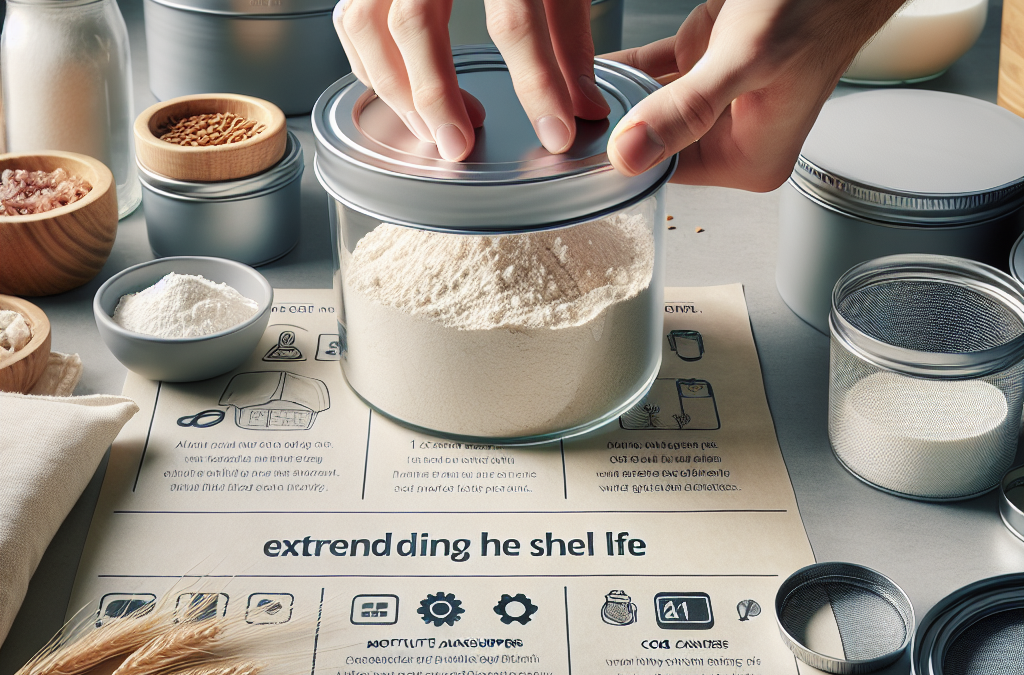Table of Contents
- Proper Storage Techniques
- Identifying Signs of Spoilage
- Understanding Oxidation Process
- Using Preservatives Naturally
Proper Storage Techniques
Hey there, let’s dive into the nitty-gritty of storing whole wheat flour properly. From my experience,
improper storage is like inviting trouble to the pantry party. First things first, a cool and dry place is your
flour’s best friend. Think of it like the chill hangout spot where it can relax without moisture getting in its
business.
Another critical thing is going airtight. You don’t want your flour breathing in all the funky odors of the
pantry, right? Invest in some good quality airtight containers. This not only keeps the flour fresh but also
prevents any pesky critters from joining in.
Lastly, location matters. Storing flour in the refrigerator or freezer is an option, especially if you’re buying
in bulk. Just make sure it’s sealed tight to avoid condensation. Trust me, frozen flour stays fresh way longer!
Identifying Signs of Spoilage
Now, nobody wants to use spoiled flour, right? Let’s talk about how you can spot the signs. I always start with
the smell test. Whole wheat flour has a distinct nutty aroma, so if it starts to smell sour or rancid, it’s a
sign that it’s gone bad. Give it a good sniff every now and then—that’s my golden rule.
Next up, the texture. Good flour should be smooth and powdery. If you feel any clumps or a sticky texture, that’s
a red flag. It usually indicates moisture has snuck in, and that’s a no-go. You want it to run through your
fingers like fine sand.
And here’s a tip I learned the hard way: Always check for any signs of bugs or larvae before using your flour. A
quick visual inspection can save you from an unwelcome surprise in your next bake.
Understanding Oxidation Process
I like to think of this as the science-y part of flour storage. Oxidation is like that annoying process which
turns things bad over time. So, what’s happening is that exposure to air slowly deteriorates the flour. Knowing
about this can help us stop it in its tracks.
In my kitchen, I use vacuum-sealing for long-term storage—it’s not just for space movies, after all! Getting rid
of air ensures that the oxidation process is slowed down significantly, and your flour stays fresher for longer.
Also, rotating your flour stock ensures that you’re using the older stuff first. It’s a smart way to make sure
nothing goes past its prime. A quick rule of thumb: First in, first out.
Using Preservatives Naturally
Sometimes, nature’s way is the best way! I’ve always been a fan of natural preservatives. Storing a bay leaf in
your flour container can help keep those pesky bugs at bay. It releases an aroma that they’re not too fond of,
while keeping your flour untouched.
Another great trick I learned from my grandmother is using whole cloves. Just scatter a few in the flour jar, and
you’re good to go. They act as natural preservatives and add a subtle aroma that won’t affect your baking at
all.
Finally, make sure the container you use is impeccably clean. Any residue can impact the shelf life of your
flour, especially if it interacts with the natural preservatives you’re adding. It’s like giving your flour a
fresh start!
FAQs
Q1: Can I use regular plastic bags for storing flour?
A1: While you can use regular plastic bags, I wouldn’t recommend it for long-term storage. They don’t seal well
enough to protect from moisture and pests. Go for vacuum-sealed bags or airtight containers for extended
freshness.
Q2: How long does whole wheat flour last in the freezer?
A2: If stored properly in an airtight container, whole wheat flour can last up to a year or more in the freezer.
Just make sure there’s no moisture contact, and you’re set.
Q3: Can I mix preserved flour with fresh flour?
A3: You can, but I’d keep them separate whenever possible. Mixing can sometimes affect the quality and freshness
of the new batch. Better to use up the older stock first before diving into a new bag.
Q4: What if I see weevils in my flour?
A4: If you spot weevils, it’s best to discard that batch entirely. They can spoil the quality of your flour and
could potentially spread to other groceries in your pantry. Prevention is key, so keep things airtight!
Related Content
Auto Amazon Links: No products found.





